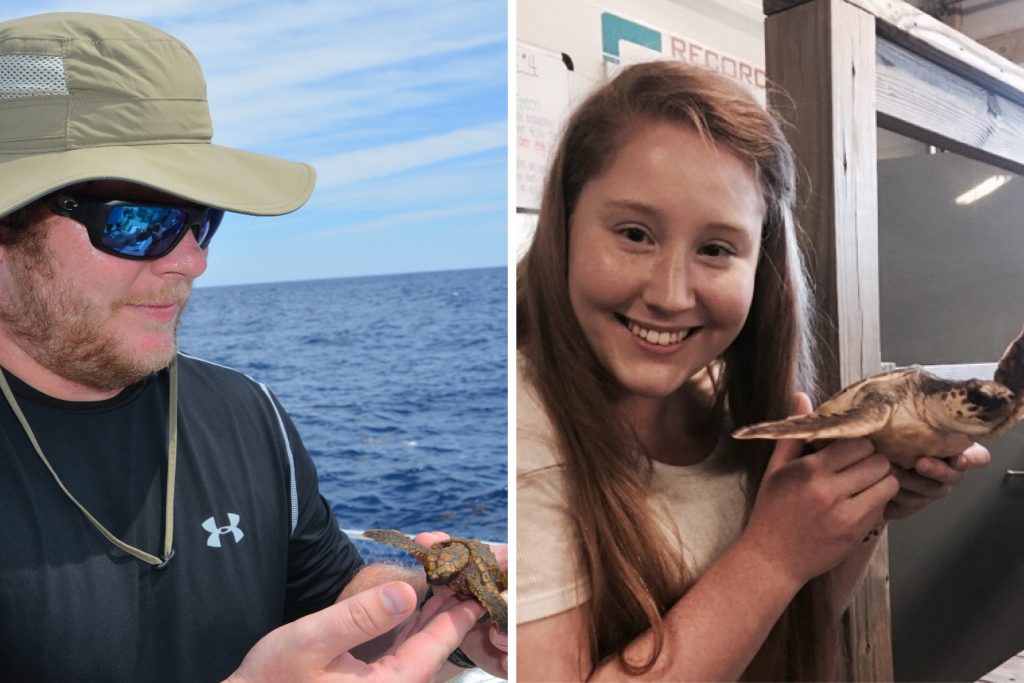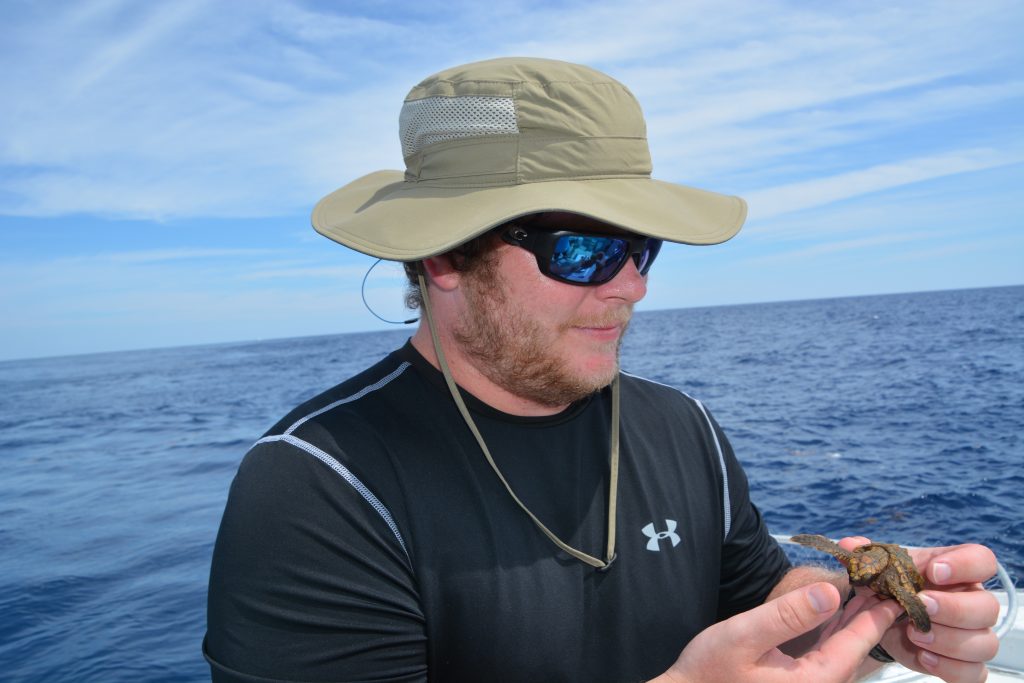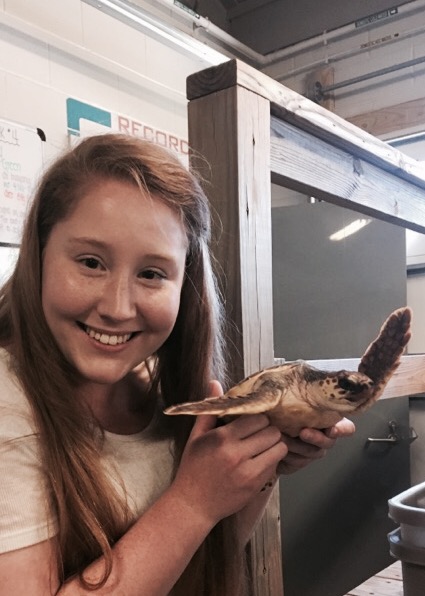Harnessing the Ocean for North Carolina’s Energy Future
September 29, 2017
Lindsay Dubbs, research assistant professor and co-director of the Outer Banks Field Site recently hired two research technicians to assist with her part of the NC Renewable Ocean Energy Program grant. Ted West III and Claire Johnson will help with data collection in the Gulf Stream and examine the potential environmental and ecological impacts of energy exploration.
The grant, managed by the UNC Coastal Studies Institute, provides resources to conduct research with the goal of conceptualizing, designing, constructing, operating, and marketing new and innovative technologies that harness ocean energy to effectively and economically fulfill part of the energy needs of the State and in the process create jobs.
Her team is currently investigating seaweed (specifically Sargassum), phytoplankton, and nutrient cycling in the Gulf Stream as well as tagging, releasing and tracking juvenile sea turtles. The grant is a collaboration with UNC’s Institute for Marine Science (Mike Piehler), East Carolina University (Ariane Peralta), Elizabeth City State University (Jinchun Yuan), NOAA’s Beaufort lab (Larisa Avens), UNC’s Coastal Studies Institute (Linda D’Anna), and Auburn University (Matt Waters).
Meet Ted West, III
Where did you grow up and how did you get into your line of work?
I grew up in Valdosta, Georgia. I entered the field when I was an undergraduate by joining a research group during my senior year. I enjoyed research and decided to continue in graduate school.
Tell us about your education and/or career?
I received a B.S. in Chemistry and a M.S. in Biology at Valdosta State University. My undergraduate research consisted of the construction of underwater remotely operated vehicles (ROV’s) to search for the marine natural product bryostatin-1, an anti-cancer and Alzheimer’s medication. In graduate school, I focused on determining what effects the invasive aquatic plant, Hydrilla verticillata has on algal abundance and community structure in Lake Seminole, a large shallow reservoir in southwest Georgia. I determined algal abundance and community structure by using a laboratory instrument called High Performance Liquid Chromatography (HPLC). After graduating, I was then hired here at Coastal Studies Institute to analyze the algal dynamics of the Gulf Stream.
What do you do in your current role?
I along with Claire, travel by boat to the Gulf Stream and collect various samples of water, microbes, invertebrates, and the seaweed Sargassum. In the lab we use various instruments and techniques to analyze certain biotic and abiotic properties of Sargassum. I specialize in the determination of the abundance and community structure of algae in open Gulf Stream water and in the dense mats of Sargassum. Along with NOAA researchers, we also attempt to capture and tag sea turtles commonly found in or near beds of Sargassum.
What is your favorite thing about your current role?
I enjoy being in the field, especially on the Gulf Stream. It is a very dynamic area of the North Atlantic Ocean and seems to provide a unique experience each time we embark.
What is a fun fact about you?
I’m interested in everything the coast has to offer such as kayaking, fishing, camping, boating and beach volleyball. I also like concerts and travelling when I have the time (and money).
Meet Claire Johnson
Where did you grow up and how did you get into your line of work?
I grew up just outside of Philadelphia and moved to Chapel Hill in elementary school. I’ve always been interested in science, but I never thought it was something that I could actually do until I came to UNC and was introduced to CEE and took some classes. I came out to the Coastal Studies Institute for the Outer Banks Field Site my senior year and it was so transformative. I got to see firsthand what kind of research was being done, how it was done, and, most importantly, that it mattered to the local community–that it was making a difference. Through the OBXFS I was able to be a part of that and I knew then that that was the direction I wanted my life to take.
Tell us about your education and/or career?
I’m really just starting out. I got this job right after graduating from UNC in 2016, so I’m only about a year and a half in, but I’ve loved every minute of it. We’re doing research that either hasn’t been done or hasn’t been thought about in 30-40 years! It’s absolutely amazing!
What do you do in your current role?
We get to do a little bit of everything! We go out into the field to collect our samples, come back to the lab to run the experiments, and analyze the data. Right now we’re working on a couple of manuscripts that we hope to submit for publication soon!
What is your favorite thing about your current role?
That’s hard, it’s a tie between the nitrogen fixation assays and getting to work with sea turtles (finding them, tracking them via satellite, and learning how and why they use the Gulf Stream).
What is a fun fact about you?
I’m a huge UNC fan, surprise! I especially love UNC basketball and I even remember watching them win the 2005 national championship as a kid!


